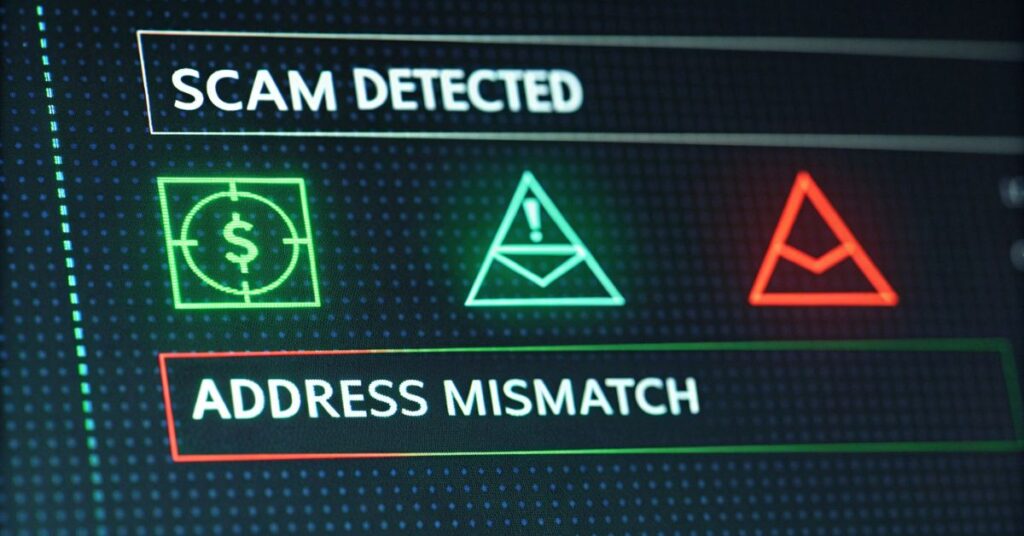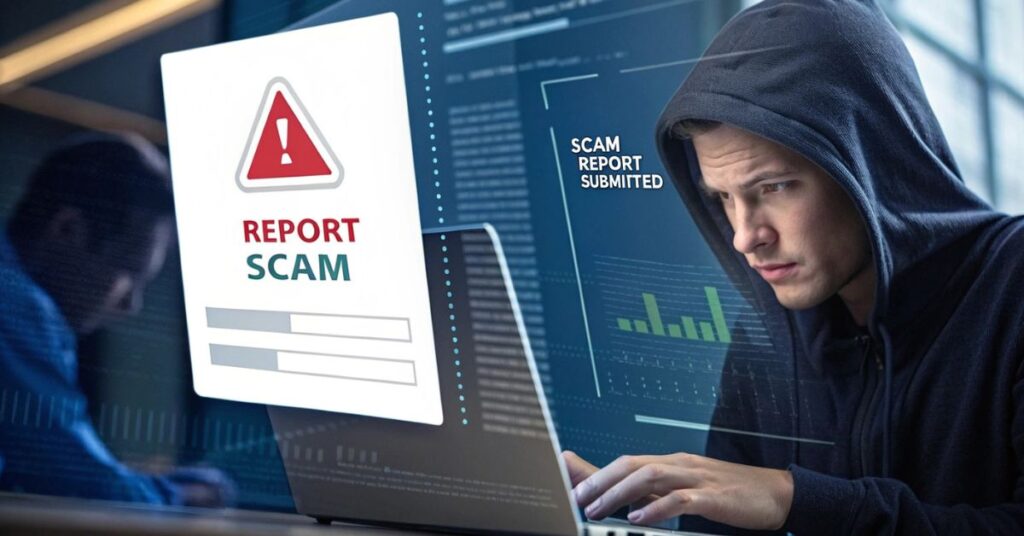Scammers are always looking for new ways to steal money, and fake_phishing361711 is one of the latest crypto scams affecting users. This scam is a form of address poisoning, where criminals create wallet addresses similar to yours to trick you into sending them money.
In this article, we will explain everything about fake_phishing361711, including how it works, real-world examples, ways to protect yourself, and expert insights.
What Is Fake_Phishing361711?
Fake_phishing361711 is a crypto phishing scam designed to trick people into sending cryptocurrency to the wrong address. Scammers generate wallet addresses that look very similar to real ones, hoping that victims will copy and paste the wrong address when making transactions.
How Fake_Phishing361711 Works
- Scammers create fake addresses – They use software to generate an address that looks like yours.
- They send small transactions – A tiny amount of cryptocurrency is sent from the fake address to your wallet.
- The fake address appears in your transaction history – You see this address in your list of recent transactions.
- You mistakenly use the fake address – If you copy and paste an address from your transaction history, you might select the scammer’s fake address.
- Your funds are stolen – Once the money is sent, it cannot be recovered.
Read Also: Ian Cylenz Lee – Musician, Producer, and His Personal Life!
Why Is Fake_Phishing361711 So Dangerous?
Fake_phishing361711 is dangerous because it tricks people in a simple way. Instead of stealing passwords or using bad links, scammers create fake wallet addresses that look real. If you copy and paste an address from your transaction history, you might send money to the wrong one.

This scam works because most people don’t check the full address before sending funds. Since blockchain transactions can’t be undone, once sent, the money is lost forever. To stay safe, always double-check addresses and use a saved contact list.
How to Identify Fake_Phishing361711 Scams
Recognizing the scam early is the best way to avoid falling victim. Here are some signs:
Unfamiliar Small Transactions
If you receive a small amount of cryptocurrency from an unknown address, it could be a scam. Scammers send tiny transactions to make their fake address appear in your history. This tricks you into copying and pasting the wrong address later.
Addresses That Look Similar to Yours
Scammers create fake wallet addresses that look almost identical to real ones. They use the same first and last few characters to make them seem trustworthy. If you don’t check the full address, you might send money to the scammer.
Unexpected Crypto Transfers
If you notice a transaction in your wallet that you didn’t make, be cautious. Scammers use these fake transactions to insert their wallet addresses into your history. Always verify the sender before trusting any transaction.
Suspicious Messages
Some scammers may contact you after sending a small transaction. They might pretend to be customer support or a crypto service asking you to verify or resend funds. Never trust unexpected messages related to your wallet.
Real-Life Examples of Fake_Phishing361711 Attacks
Many crypto users have reported being scammed by fake_phishing361711. Here are some real cases:
- Case 1: A Bitcoin Investor Lost $5,000
A Bitcoin investor copied a scammer’s address from their transaction history by mistake. Without realizing it, they sent $5,000 worth of Bitcoin to the fraudster and couldn’t recover it.. - Case 2: An Ethereum Trader Got Tricked
An Ethereum trader accidentally sent $2,500 to a fake address that looked real. The scammer used address poisoning, and the trader lost their funds permanently.
These cases show how easy it is to become a victim if you’re not careful.
How to Protect Yourself from Fake_Phishing361711
Here are the best ways to stay safe from address poisoning scams:
- Never Copy Wallet Addresses from Transaction History: Always copy and paste wallet addresses from a trusted source, such as a saved contact or verified website.
- Double-Check Every Address Before Sending Money: Verify the entire wallet address, not just the first and last few characters.
- Use a Crypto Address Book: Most wallets allow you to save addresses. Always use saved addresses instead of copying them from transaction history.
- Enable Security Features: Use whitelisting so that only trusted addresses can receive transactions. Activate two-factor authentication (2FA) for extra protection.
- Use a Hardware Wallet: A hardware wallet keeps your funds safer because it requires physical confirmation for transactions.
- Monitor Your Transactions: Regularly review your wallet activity to spot unusual transactions.
- Be Aware of Scammer Tactics: Stay updated on the latest scams and fraud techniques.
What to Do If You Become a Victim of Fake_Phishing361711
If you accidentally send money to a fake address, here’s what you should do:
1. Act Quickly: Once crypto is sent, it is nearly impossible to recover. However, acting fast may help.
2. Report the Scam: Report the scam to your wallet provider and crypto exchange. Some exchanges can blacklist scam addresses.
3. Warn Others: Post about the scam in crypto forums and social media to alert other users.
4. Check If You Can Trace the Funds: Use a blockchain explorer to track the scammer’s wallet. In some cases, authorities might be able to intervene.
Why Address Poisoning Scams Are Increasing
Address poisoning scams like fake_phishing361711 are increasing because more people are using cryptocurrency. Scammers know that new users often make mistakes, and they take advantage of that. Since crypto transactions happen quickly and can’t be reversed, victims lose their money permanently.
Many people copy and paste wallet addresses without checking them carefully. Scammers create fake addresses that look real, tricking users into sending funds to the wrong place. Because of this, address poisoning scams are becoming more common in the crypto world.
How Crypto Wallets Can Prevent Address Poisoning
Some crypto wallets are introducing features to stop these scams:
- Address Confirmation Prompts – Some wallets now show full addresses for confirmation before sending funds.
- Blacklist Suspicious Addresses – Some services allow users to block known scam addresses.
- AI-Based Address Matching – Future wallets may use AI to detect and warn about similar-looking addresses.
How to Report Fake_Phishing361711

If you spot this scam, report it to:
- Your Crypto Wallet Provider – Report the scam so they can flag suspicious addresses and warn users.
- Your Crypto Exchange – Notify your exchange, as they may track and block fraudulent transactions.
- Crypto Fraud Reporting Platforms – Websites like CryptoScamAlert allow users to report scams and protect others.
Frequently Asked Questions (FAQs)
1. What is fake_phishing361711?
Fake_phishing361711 is a crypto scam where scammers create fake wallet addresses that look real, tricking users into sending funds to the wrong address.
2. How can I avoid fake_phishing361711?
Never copy and paste wallet addresses from your transaction history, always double-check addresses, and use a crypto address book.
3. Can I recover my funds if I fall for this scam?
Unfortunately, crypto transactions are irreversible, making recovery almost impossible. However, reporting the scam may help prevent others from being targeted.
4. Why do scammers use fake addresses?
They take advantage of human mistakes when copying and pasting wallet addresses.
5. Are certain cryptocurrencies more vulnerable to this scam?
Scams like fake_phishing361711 are most common with Bitcoin (BTC), Ethereum (ETH), and other popular cryptocurrencies because they have high transaction volumes.
Conclusion
Fake_phishing361711 is a growing crypto scam that tricks people into sending money to fake wallet addresses. By understanding how this scam works and following best security practices, you can protect yourself from losing your crypto funds.
Stay informed, double-check all transactions, and use safe wallet practices to keep your cryptocurrency secure.
Read Also:



